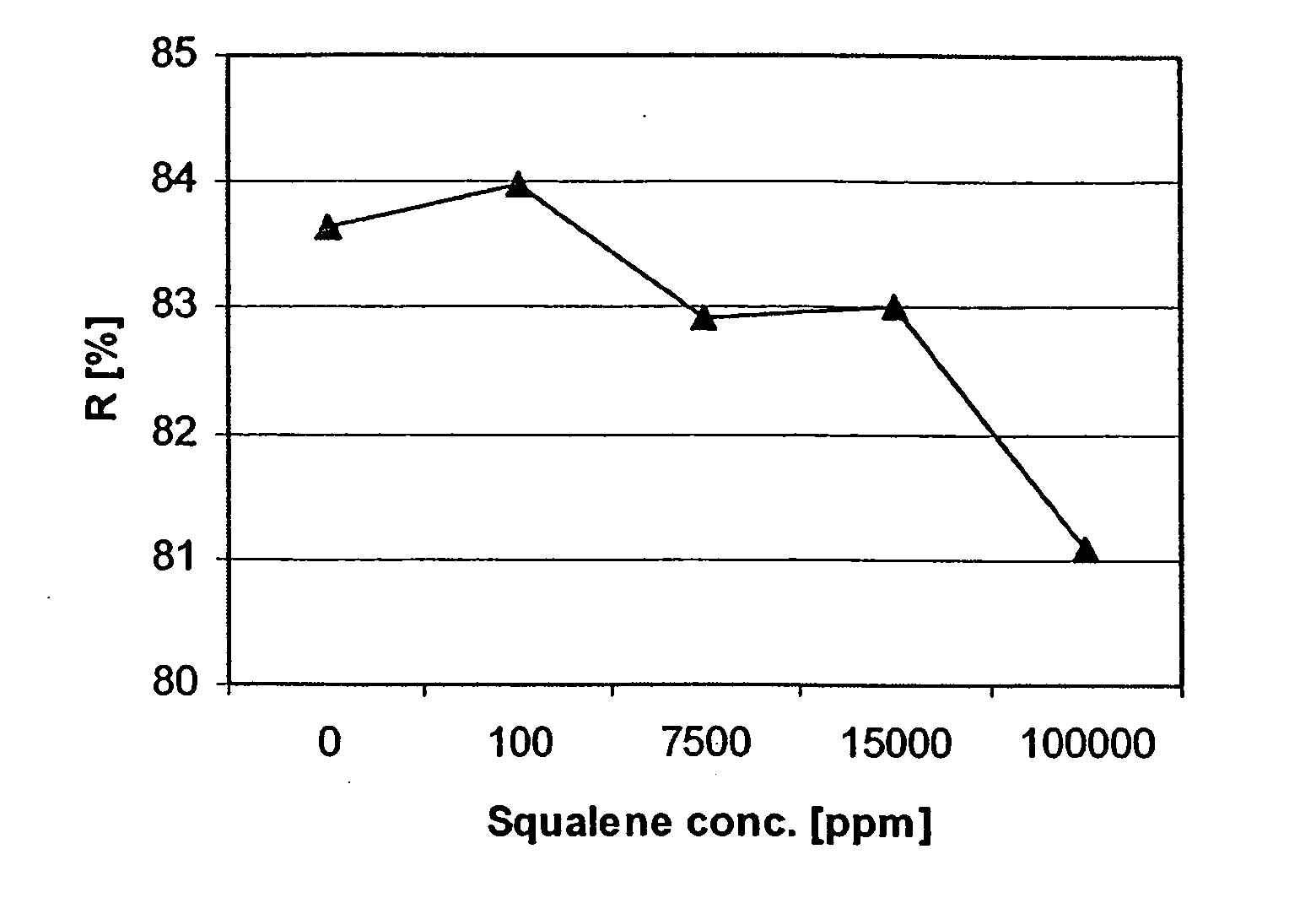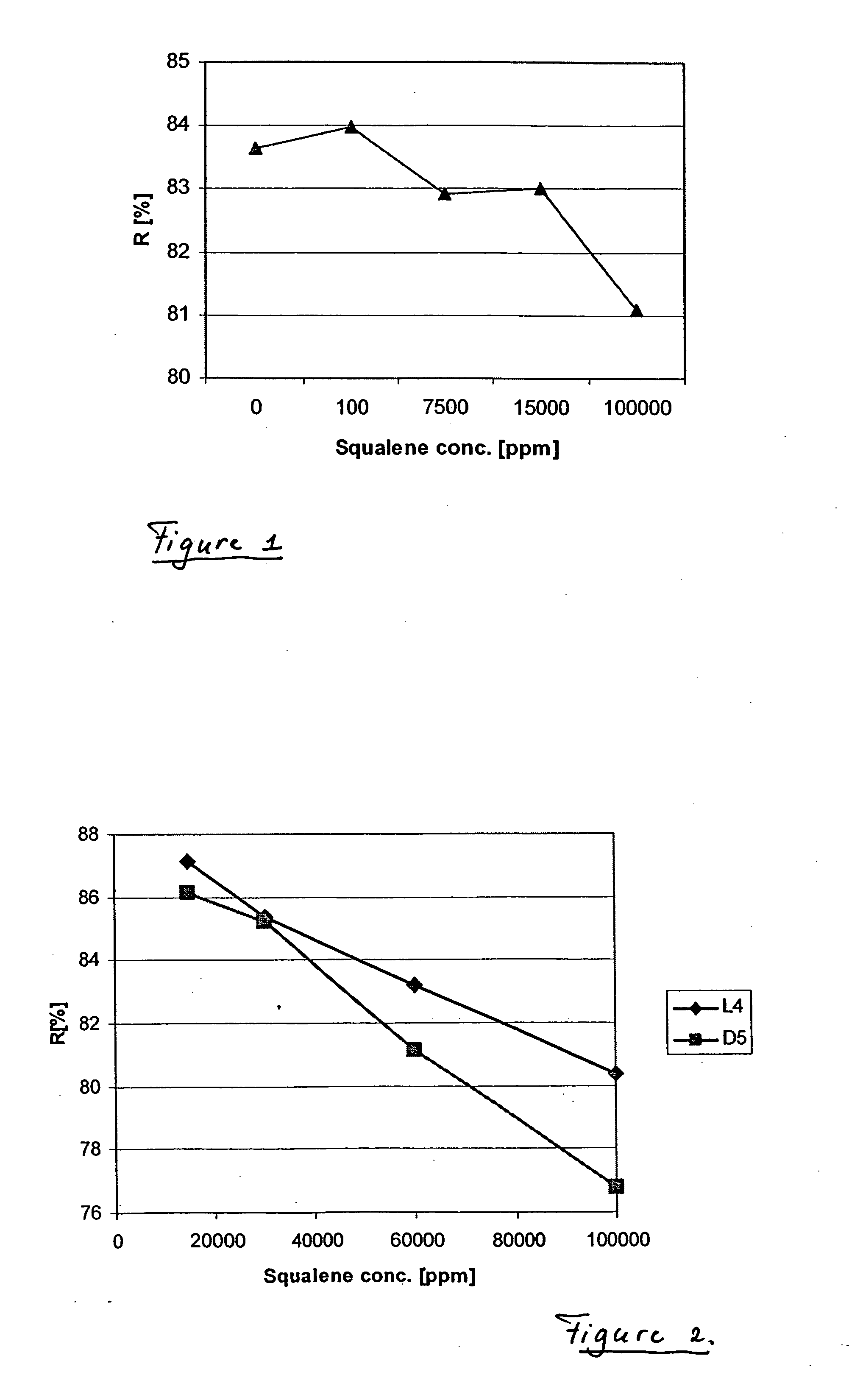Dry cleaning process
a technology of dry cleaning and process, applied in the field of dry cleaning process, can solve the problems of low toxicity, unpractical and prohibitive cost, and relatively short atmospheric lifetim
- Summary
- Abstract
- Description
- Claims
- Application Information
AI Technical Summary
Benefits of technology
Problems solved by technology
Method used
Image
Examples
example 1
[0130] A number of white cotton cloths were cut and dipped in octamethyl cyclotetrasiloxane (L4), as dry cleaning solvent, containing various concentrations of squalene. The concentrations of squalene in the L4 solvent were 0, 11, 7500, 15 000 and 100 000 ppm.
[0131] Subsequently, these dipped cloths were centrifuged using a table centrifuge during 10 minutes at a speed of 2000 rpm. After this centrifuging step, solvent retention values (in the cloth) of between 0.11 and 0.16 were observed, expressed as the weight of the retaining solvent divided by the weight of the dry cloth. Thereafter, the test cloth were connected to a tea towel and hung in ambient room air, but not in open sun light. The test cloth were stored in this way for more than 3 months. After 100 days of storage, the reflectance (R) at 480 nm of these test cloths was measured. The results are given in FIG. 1, showing the relationship between reflectance value and squalene concentration.
[0132] It can be clearly observ...
example 2
[0136] An additional series of measurements was carried out using test cloths which were dipped in two different types of dry cleaning solvents containing the various level concentrations of squalene. As dry cleaning solvents, octamethyl cyclotetrasiloxane (L4) and decamethyl cyclopentasiloxane (D5) were used. The concentrations of squalene in these dry cleaning solvents were: 15 000, 30 000, 60 000 and 100 000 ppm.
[0137] In this example, the dipped test cloths were centrifuged and stored in the same as in example 1. After 100 days of storage, the reflectance (R) at 480 nm was measured The results are given in FIG. 2, showing the relationship between reflectance value and squalene concentration for the two solvents applied. When observing these results, it can be noticed that the reflectance values for the same squalene levels are generally somewhat higher than those found in example 1. The reason may be a different location of storage for this second series of test cloths. This ma...
PUM
 Login to View More
Login to View More Abstract
Description
Claims
Application Information
 Login to View More
Login to View More - R&D
- Intellectual Property
- Life Sciences
- Materials
- Tech Scout
- Unparalleled Data Quality
- Higher Quality Content
- 60% Fewer Hallucinations
Browse by: Latest US Patents, China's latest patents, Technical Efficacy Thesaurus, Application Domain, Technology Topic, Popular Technical Reports.
© 2025 PatSnap. All rights reserved.Legal|Privacy policy|Modern Slavery Act Transparency Statement|Sitemap|About US| Contact US: help@patsnap.com


